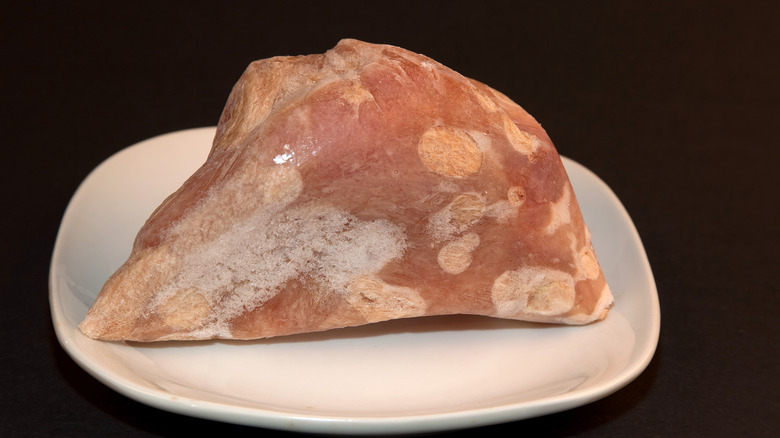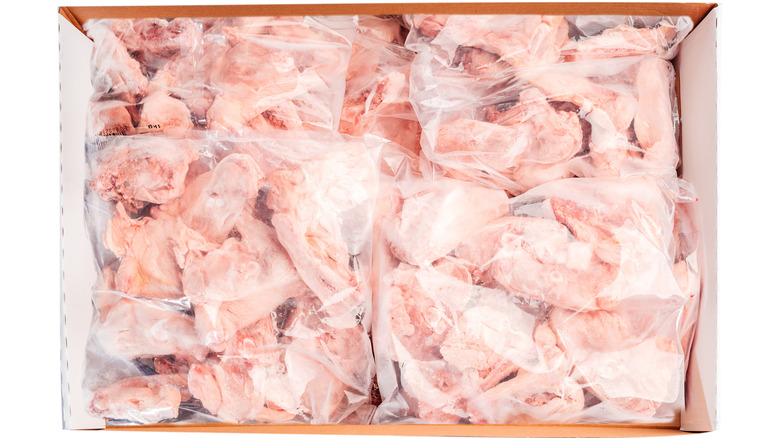How To Tell If Your Chicken Is Actually Freezer Burned
Your freezer is one of the most important appliances in your kitchen. It gives you access to ice whenever you need it, keeps all that food you bought from Costco fresh, and makes batch cooking possible. That which gives so generously can also take away, though. That's exactly what happens when your food suffers from freezer burn.
Besides being a sign you need to throw away your frozen food, what exactly is freezer burn? According to WebMD, freezer burn refers to the loss of natural moisture from food. Some noticeable discoloration occurs and ice crystals form on the surface. The formation of ice crystals can be a fairly common occurrence whether there's freezer burn or not, so how can you really tell? Since it's one of the most commonly frozen foods, chicken is a great indicator of freezer burn.
Chicken that you buy from the market has a recognizable and distinctive color. As it develops freezer burn, the color starts to turn a pale beige or gray. If you're not convinced by the color and ice crystals, you can defrost the chicken and also judge by the meat's appearance. If it looks and feels tougher than what you know raw chicken to be, freezer burn has likely set in because a significant amount of the meat's natural moisture has been pulled out of it. At this point, it's still safe to eat but is probably no longer worth cooking due to loss of flavor and tenderness.
How to avoid freezer burn on your chicken
It's natural to wonder how long chicken lasts in the freezer before it begins to suffer from freezer burn. While the frozen life of chicken isn't as short as you might think, that doesn't mean you shouldn't be cautious. Properly sealed chicken can last up to 12 months in the freezer without an alarming loss in quality. However, chicken that isn't property sealed in an airtight bag or container, or that's wrapped in thin plastic, will have a higher chance of developing freezer burn. Also, as a general health rule, you'll want to make sure your freezer's temperature stays consistently around 0 degrees Fahrenheit. Big fluctuations in temperature can also lead to premature freezer burn.
Freezer burn for all ingredients may be inevitable but the best method of prevention is smart ingredient cycling. If you do buy proteins in big batches from stores like Costco or Sam's Club, try labeling each item by date of purchase so you know which ones to use first. For those who also like to save chicken carcasses for making homemade chicken stock, try not to hold on to the bones for longer than two to four months. It's tempting to want to over stock on bones and scraps but if the ingredients experience freezer burn and lose their natural flavor there won't be much they can contribute to the stock in the end.

